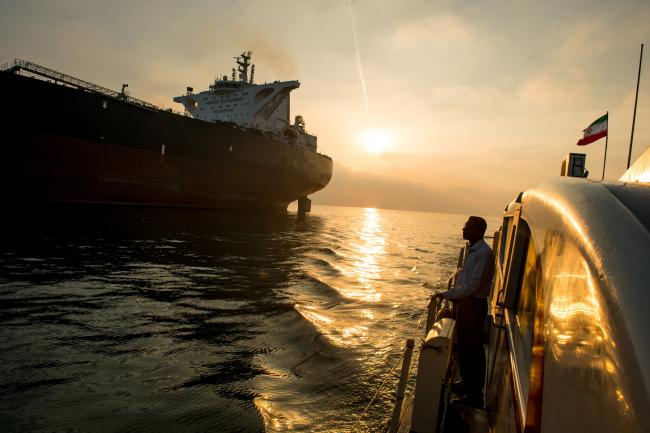(Bloomberg Opinion) -- Winter is coming, and the oil market is starting to look pretty tight.
Iran’s oil exports are down by almost a third since President Donald Trump said in April that the U.S. would withdraw from the nations’ nuclear deal and reimpose sanctions. They slid below 2 million barrels a day in August and continued to deteriorate in the first half of September, creating a build-up of crude held in tankers floating offshore.
On paper there is enough spare capacity among other OPEC producers and Russia to offset falling Iranian supply — but what exists on paper and what can be brought into production in the next month or so are not necessarily the same.
Add in a seasonal increase in oil use and the potential for further production shortfalls elsewhere in the world, and supply could start seriously trailing demand within weeks. That could be enough to propel oil prices higher.
The spare capacity among OPEC members has already dwindled below 2 million barrels a day. Those countries that could do so have lifted output in response to June’s (disputed) decision to abandon individual output targets.
In theory Saudi Arabia could immediately raise output to 11.5 million barrels a day — that’s what Crown Prince Mohammed bin Salman told Bloomberg in April 2016. But it hasn’t ever needed to produce that much, and its ability to do so remains untested. Reaching that level of would probably take several months and require significant drilling activity.
The number of rigs drilling for oil in Saudi Arabia has been on the rise since April, but is still only back where it was in the spring of 2017, when the kingdom’s focus was on cutting, not boosting output. London-based Energy Aspects consultants Amrita Sen and Michal Meidan said Sept. 10 that even if the kingdom has started the Khurais field expansion, which has a capacity of 0.3 million barrels a day, it’s probably ramping up to that level only slowly.
After the June meetings between OPEC and its friends there was a flurry of talk about restarting production at the fields in the Neutral Zone, shared between Saudi Arabia and Kuwait, but there has been little activity on the ground. Don’t expect to see any production from those fields before the first quarter of next year at the earliest.
Elsewhere, Russia has lifted its output by almost 250,000 barrels a day since May. The country has the ability to boost production by a further 300,000 barrels, oil minister Alexander Novak told Bloomberg in Vladivostok last week. But it won’t decide whether the world needs that extra oil until after meeting with its OPEC allies later this month in Algiers.
By then the fourth quarter will be almost upon us, and that is when things could get tight. Energy Aspects see the world needing 33.5 million barrels a day of OPEC oil by then, in line with the group’s own forecast. OPEC is currently supplying 32.7 million barrels a day, according to a Bloomberg survey, and that is with Iraq, Nigeria and Libya all producing near multi-year highs while their security situations deteriorate.
If recent supply disruptions in either African country are repeated, or the unrest in Iraq’s second city spreads to nearby oil fields, the shortfall could easily rise above a million barrels a day. The continued slide in Venezuelan production looks set to worsen the picture.
Leave aside concerns about prospects for developing economies and the impact of Trump’s trade wars that are darkening the outlook for oil demand. While these are legitimate worries, they won’t manifest themselves until next year.
The more pressing issue is the fact that Iran’s exports are falling faster than most analysts had anticipated. A supply squeeze could be enough to push Brent firmly above $80 a barrel for the first time since Nov. 2014.
This winter could turn out to be a hot one indeed for oil markets.
